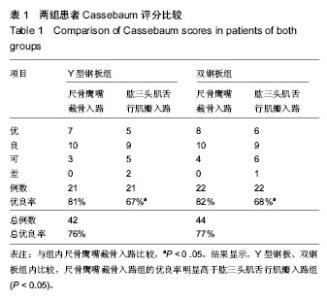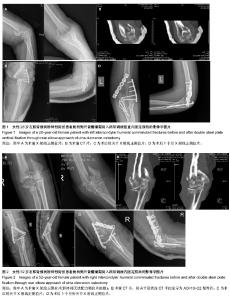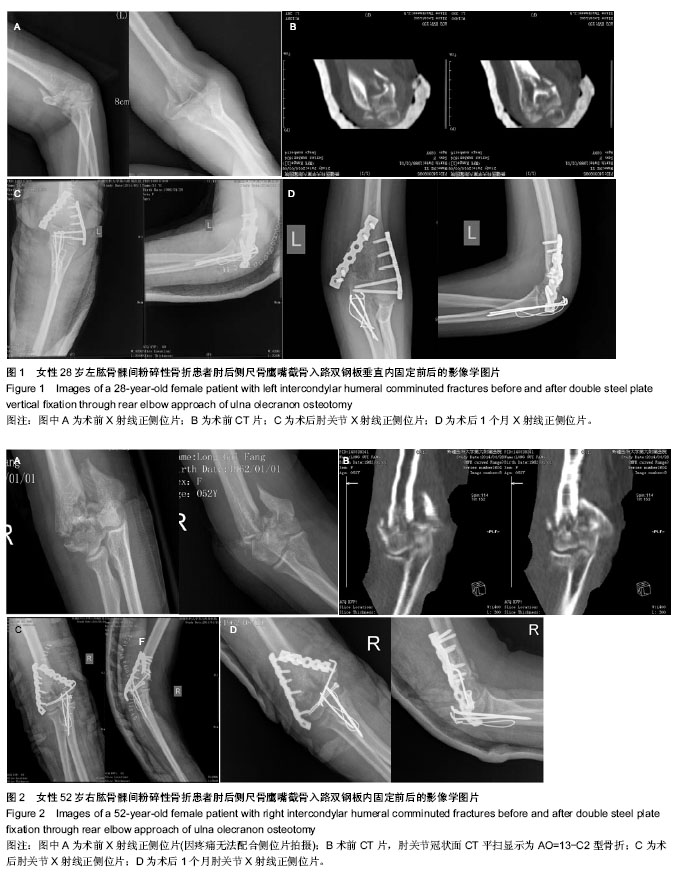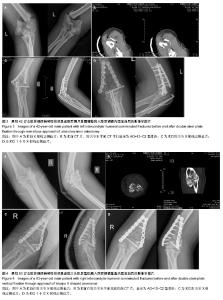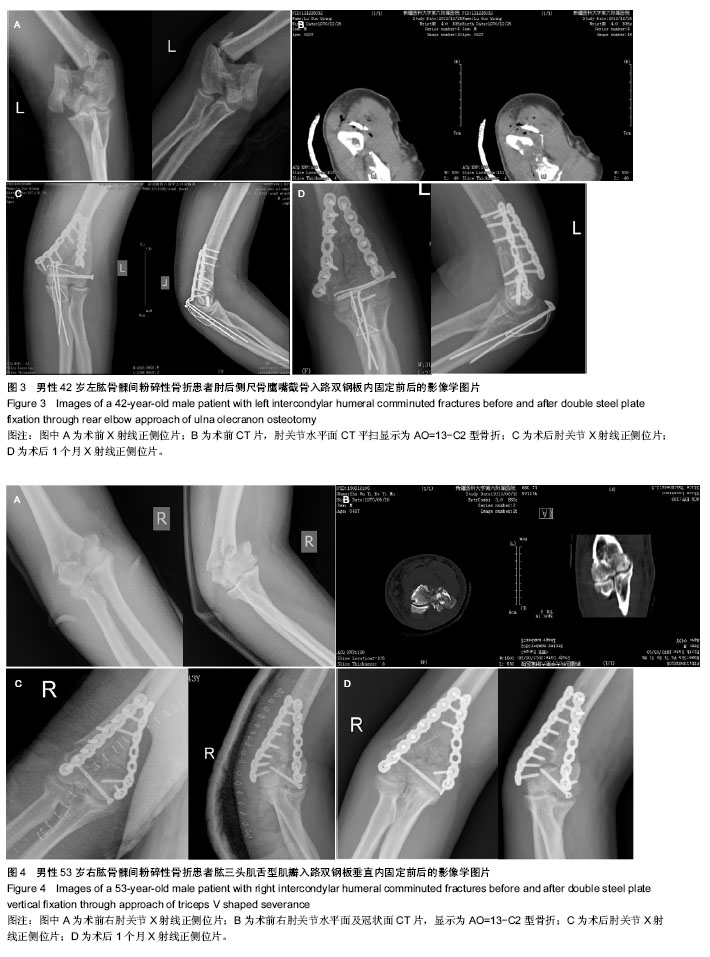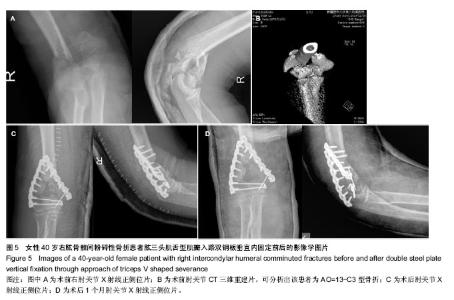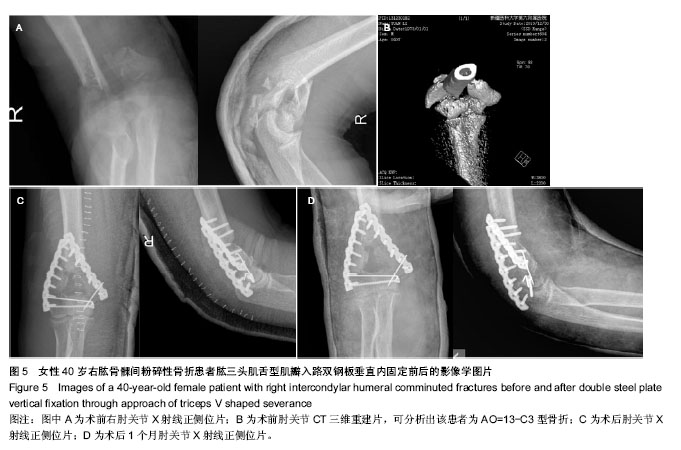| [1] Madej D, Kaluza J, Antonik A, et al. Calcium, magnes ium, iron and zinc in drinking water and status biomarkers of these mineral samong elder people from Warsaw region. Rocz Panstw Zakl Hig. 2011;62(2): 159-168.
[2] 卓乃强,万永鲜,鲁晓波,等.锁定钢板和普通钢板置入老年复杂肱骨髁间骨折的生物力学比较[J].中国组织工程研究, 2012,16(4): 618-621.
[3] Yang Y, Huang PQ, Fang JW. Treatment of seyerely comminuted fractures of humeral intercondylar through approach of osteotomy olecranon with double-plate internal fixation. Zhongguo Gu Shang. 2009;22(5): 335-336.
[4] Jupiter JB, Neff U, Holzach P, et al. Intercondylar fractures of the humerus: an operative approach. Bone Joint Surg (Am). 1985;67(2): 266-269.
[5] Helfet DL, Kloen P, Anand N, et al. ORIF of delayed unions and nonuions of distal humeral fractures. Sugical technique. J Bone Joint Surg Am. 2004;86(1): 18-29.
[6] Osti M, Benedetto KP. Results of arthroscopically assisted refixation of fractures of the intercondylar eminence. Z Orthop Unfall. 2010;148(3): 288-291.
[7] 王胜告. 老年肱骨髁间骨折的内固定手术治疗[J].中国老年学杂志, 2012, 32(6): 1274-1275.
[8] Ali AM, Hassanin EY, El-Ganainy AE, et al. Management of intercondylar fractures of the humerus using the extensor mechanism-sparing paratricipital posterior approach. Acta Orthop Belg. 2008; 74(6): 747-752.
[9] 覃鑫,罗克玲,谢福,等.以AO原则置入解剖接骨板固定治疗肱骨髁间骨折37例:一所市级医院骨科5年病例回顾[J].中国组织工程研究与临床康复, 2010, 14(17): 3189-3192.
[10] 张磊,原林,戴景兴,等.肱骨髁间骨折3种内固定的生物力学比较[J].解放军医学杂志,2005, 30(4): 339-341.
[11] McCartney WT, Comiskey DP, Mac Donald B, et al. Fixation of humeral intercondylar fractures using a lateral plate in 14 dogs supported by finite element analysis of repair. Vet Comp Orthop Traumatol. 2007;20(4): 285-290.
[12] 平建锋,钱宇,孙文东,等.肱三头肌内外侧入路平行双锁定钢板治疗老年肱骨髁间骨折的疗效[J].中国老年学杂志, 2012, 32(7): 1375-1376.
[13] 田大胜,荆珏华,钱军,等.尺骨鹰嘴截骨平行双钢板内固定治疗成人C型肱骨髁间骨折[J].临床外科杂志, 2013, 21(3): 200-202.
[14] 宋忠良,蔡培华.经尺骨鹰嘴截骨入路Y形钢板治疗肱骨髁间骨折临床探讨[J].临床医学, 2006, 26(6): 35.
[15] Self J, Viegas SF, Buford WL Jr, et al. A comparison of double-plate fixation methods for complex distal humerus fractures. J Shoulder Elbow Surg. 1995;4(1):10-16.
[16] Pajarinen J, Bj6rkenheim JM. Operative treatment of intercondylar fractures of the distal humerus: results after a mean follow-up of 2 years in a series of 18 patients. J Should Elbow Surg. 2002;11(1): 48-52.
[17] Yang KH, Park HW, Park SJ, et al. Lateral J-plate fixation in comminuted intercondylar fracture of the humerus. Arch Orthop Trauma Surg. 2003;123(5): 234-238.
[18] 平建锋,钱宇,孙文东,等.肱三头肌内外侧入路平行双锁定钢板治疗老年肱骨髁间骨折的疗效[J].中国老年学杂志, 2012, 32(7): 1375-1376.
[19] 程煜方,魏忠民,黄方敏,等. Y型锁定钢板置入治疗成人肱骨髁间骨折36例[J]. 中国组织工程研究与临床康复, 2011, 15(43): 8155-8158.
[20] Helfet DL, Kloen P, Anand N, et al. Open reduction and internal fixation of delayed union and nonunions of fractures of the distal part of the humerus. J Bone Joint Surg Am. 2003; 85(1): 33-40.
[21] 谢志新,吴迪,虢新莲,等. Y形钢板和双钢板经不同置入途径治疗肱骨髁间骨折的比较[J].中国组织工程研究与临床康复, 2011, 15(17): 3103-3108.
[22] 王胜告.老年肱骨髁间骨折的内固定手术治疗[J].中国老年学杂志, 2012, 32(6): 1274-1275.
[23] 邓洪波.经尺骨鹰嘴截骨入路双钢板固定治疗肱骨髁间骨折[J].重庆医科大学学报, 2010, 5(5): 776-778.
[24] Jamali AR, Mehboob G, Ahmed S. Extensor mechanism sparing approach to the elbow for reduction and internal fixation of intercondylar fracture of the humerus. J Pak Med Assoc. 1999;49(7): 164-167.
[25] 郑柏生,王少恒,蔡新新,等. Y型钢板和双钢板治疗成人肱骨髁间骨折疗效对比研究[J].局解手术学杂志, 2012, 21(3): 288-289, 293.
[26] Allende CA, Allende BT, Allende BL, et al. Intercondylar distal humerus fractures surgical treatment and results. Chir Main. 2004;23(2): 85-95.
[27] 梁高峰,王坤正,张朝,等.应用双柱理论指导治疗肱骨髁间骨折[J]. 中国骨与关节损伤杂志, 2011, 26(1): 65-66.
[28] Gainor BJ, Moussa F, Schott T, et al. Healing rate of transverse osteotomies of the olecranon used in reconstruction of distal humerus fractures. J South Orthop Assoc. 1995;4(4): 263-268.
[29] 罗军,李保良,吴任涛,等. AO双钢板法内固定治疗复杂肱骨髁间骨折[J].创伤外科杂志, 2012, 14(2): 133-136.
[30] 解笑宸,康斌,辛风,等.钢板结合螺钉和克氏针材料内固定治疗肱骨髁间骨折疗效观察[J].河北医药, 2011, 33(14): 2114-2115.
[31] 刘平,尹生云,陈振兵,等.经尺骨鹰嘴截骨入路双柱固定治疗肱骨髁间骨折[J].山东医药, 2013, 53(3): 10-11.
[32] 彭方成,王贤月.改良肘后入路治疗C型肱骨髁间骨折32例[J]. 临床骨科杂志, 2011, 14(4): 470-470.
[33] Mckee MD, Wilson TL, Winston L, et al. Functional outcome following surgical treatment of intra-aritcular distal humeral fractures through a posteerior approach. J Bone Joint Surg Am. 2000;82(12): 1701-1707. |
